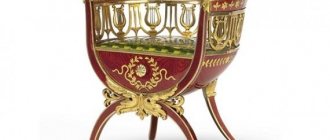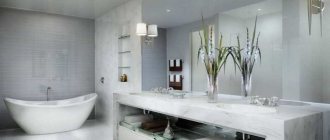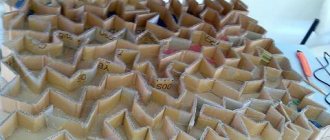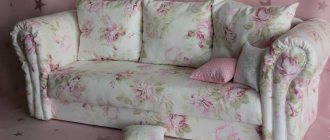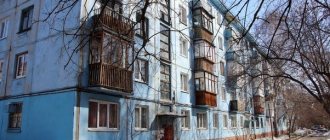When it comes to Soviet furniture, you most often hear 3 things:
- “The USSR never had its own furniture. It was brought from the GDR, Hungary, Czechoslovakia, etc.”
- "She was terrible to look at."
- “She was quality.”
Each of these statements can be argued. But we don't want to do this. Let's just plunge into the atmosphere of past years, look at the photos and remember what it really was like (yes, yes, it was) - Soviet furniture.
Types and styles of Soviet furniture
How did the production of household goods develop in the USSR? In what styles was Soviet furniture made? Let's look at these questions further.
Let's start with the fact that in pre-revolutionary Russia, furniture was produced mainly by hand or in a semi-handicraft way. Furniture factories were concentrated near St. Petersburg, Moscow, Riga, Kyiv and some other cities.
Under the USSR, industry began to gain momentum, and by 1940 the country already had many specialized enterprises in Moscow, Kharkov, Taganrog, Makhachkala, Gomel, Simferopol and other cities. They mass-produced simple and cheap furniture for the general population, as well as higher quality and “chic” products for new hotel and administrative buildings.
During the Great Patriotic War, factories, for the most part, were focused on producing a variety of goods for the front. Afterwards they were reorganized into sawmills and wood processing factories. It became possible to talk about the development of the quality and design of Soviet furniture only towards the end of the 1950s. But let's see what happened before that.
1926-1931. Foundation of the enterprise
The company traces its origins back to 1926, from the time when Plant No. 28 began to develop the wetland at the head of the Neglinka River in order to create a branch there. In the same year, a railway line was brought to this territory for the delivery of timber, sheds were built for its storage and three narrow-gauge railways were connected to supply timber to the machines, of which there were only three: two horizontal and one vertical saws purchased abroad. There were no industrial buildings.
In 1929, a branch of Plant No. 28 was separated into an independent Plant No. 41, which was the only supplier in the Soviet Union of high-quality wooden parts for aircraft - mainly propellers, and from waste it produced blanks for furniture legs, which were sold to state enterprises and artels.
1932-1939. Plant expansion
In the early 30s, the plant was expanded and built, dirt roads were paved with cobblestones, the barracks located on the territory of the plant were rebuilt into residential buildings (there had previously been a labor exchange in the barracks), and a canteen was opened for the workers.
October 1, 1934 Plant No. 41 became part of the All-Union Trust of the furniture association “Union Furniture” of the NK Forests of the USSR. In the same year, Marshal of the Soviet Union M.P. visited the plant. Tukhachevsky, together with the head of the Main Directorate of the Aviation Industry (GUAP) P.I. Baranov.
In 1935, the plant's output amounted to 1.8 million rubles. (at constant 1926–1927 prices). The number of employees reached 290 people. In 1938, the Soyuz Furniture trust was liquidated, and Glavspetsdrevprom was organized in its place, where Plant No. 41 was transferred. New batches of new wood arrived at the plant by railcars: ash in round timber from the Primorsky Territory and from the Ussuri River region, oak ridges from Bryansk, Shumerlinsky and other regions of Chuvashia.
1940-1941. Products for the front
Since March 1940, Plant No. 41, having merged with the Moscow Glider Plant, began to produce gliders, vessels for small rivers and snowmobiles.
Since the beginning of the Great Patriotic War, along with other enterprises, it was completely switched to the production of products for the front. The plant was entrusted with the task of organizing the production of snowmobiles for special purposes (for transporting the wounded, equipment, ammunition, and carrying out landing operations).
1942-1945. Years of the Great Patriotic War
For the development and production of a new type of weapons for the Red Army, the plant, which was evacuated at that time to the city of Kirov, was awarded the Order of the Red Banner of Labor by the Decree of the Presidium of the Supreme Soviet of the USSR on June 12, 1942.
In Moscow, on the basis of the remaining equipment of Plant No. 41, the production of gliders and semi-gliders for the water rescue society (OSVOD) was organized in the summer, and snowmobiles in the winter. The plant was renamed the Moscow Glide Plant. And a year later, in all documents it was already referred to as Plant No. 42.
During the Great Patriotic War, many employees of the enterprise went to the front, 37 of whom gave their lives in battles for the freedom and independence of our Motherland. A memorial plaque with the names of the victims was installed on the territory of the enterprise. On Victory Day, a rally is held at this holy place with the laying of flowers in memory of the victims.
1946-1950. Post-war years
At the end of the Great Patriotic War, in 1946 the plant was transferred to the production of peaceful products - boats for small rivers. In August 1947, Plant No. 42 was transferred from the Glavspetsdrevprom system to the Glavlesmash system of the USSR Ministry of Forestry Industry. This determined the profile of the plant, which, at the same time as boats, began to produce power plants for logging, repair shops, and truck cranes with a lifting capacity of 3 tons for loading timber.
An article was written about the NKL-27 tractor-boats, produced by Plant No. 42, in the newspaper “Evening Moscow” dated May 11, 1948. Dozens of boats served in rafting timber along the Kamea and its tributaries, and transported collective farmers passengers along the Volga, Oka and tributaries The Moscow Rivers were used to tow heavy cargo and passenger barges along the small rivers of the Moscow region. On the territory of the plant (on the site of a 6-story plant administration building) there was a test water pool for testing boat engines.
This was the profile until 1951.
1951-1961. Glavmebelprom
With the transition in 1951 to the Glavmebelprom system, Plant No. 42 began producing upholstered furniture. The number of production personnel at that time was 307 people.
Over the next years, the plant begins construction of new buildings, continuously increasing the production of furniture. In the summer of 1955, when the facilities of the first stage of expansion of the enterprise were put into operation, Plant No. 42 was transferred to the Glavmebelprom system of the Ministry and received the name Moscow Furniture Assembly Plant No. 2.
In 1959, in the first year of the seven-year plan, work began on the construction of a second production building. At this time, the plant produces 10 types of furniture. Produces 263 units of upholstered furniture and 125 units of cabinet furniture per day. Much credit for the success of the enterprise during the period of its transformation into the largest furniture factory in the capital belongs to the then director L.Yu. Boguslavsky.
1962-1970. Recognition and expansion
1962 - successful completion of the government’s task for the manufacture of furniture and other products for the equipment of the Kremlin Palace of Congresses, a group of workers was awarded the Order of the Red Banner of Labor, the “Badge of Honor” and medals “For Labor Distinction”.
The set of small-sized sectional furniture K-58-103 “Moscow”, presented at VDNKh, brought new success to the team; 12 workers were awarded medals. 1963 - appointment of P.R. Rumyantsev as director of the plant.
By the end of the seven-year period, 80 thousand wardrobes, 100 thousand sofa beds, 20 thousand sideboards, 25 thousand armchair beds, 3 thousand sets were supplied to furniture stores per year. The plant switched to finishing furniture in panels and parts using the pouring method, without preliminary assembly. Glues of animal origin have been completely replaced by synthetic ones. New materials have been introduced: latex, foam rubber, polyvinyl chloride runners, etc.
1966 - the plant was rebuilt, expanded (the production area of the plant reached 21,350 sq. m.), and became a highly profitable, mechanized enterprise.
1969 - MMSC-2 was one of the first in the country to introduce advanced achievements of science and technology: single-bay presses with a short veneering cycle, ultraviolet drying of varnish coatings, tapeless veneer gluing. The number of industrial production personnel reached 2087 people.
1971-1980. State order
The team is increasing its pace. Labor productivity increased by 60%. For the successes achieved, the Presidium of the Supreme Soviet of the USSR awarded MMSC-2 with the anniversary Badge of Honor “50 Years of the USSR”. 17 plant workers were awarded orders and medals.
In 1972, the plant switched to working according to the Shchekino method, which made it possible to increase production volumes with the same or less staff. In the buildings, the existing areas were reconstructed with the installation of recreation rooms, utility rooms, winter gardens, a bathhouse-sauna, a gym, and a tennis court.
1979–1980 - State order for the manufacture of furniture for the Olympic Village.
1981-1989. Merger of enterprises
1981 - appointment of A.S. Sarzhin as director of MMSC-2. 1981, 1982, 1983 - old dilapidated structures unfit for use were finally demolished. The area was completely paved and landscaped. Transitional galleries were built connecting the administrative building with production facilities No. 1 and No. 2.
Under the leadership of chief engineer Gulin V.S., deputy chief engineer Puznyansky B.M., commercial director Siventsov V.P., director for economic issues Stroganova L.S. A lot of creative work is being carried out at the plant on the technical re-equipment of production. In 1985, the subject and technological specialization of all buildings and workshops was completed.
Building No. 1 specializes in the production of cabinet furniture using laminated panels and partial production of facades lined with valuable wood veneer, and building No. 2 specializes in the production of cabinet furniture from panels lined with valuable wood veneer, synthetic veneer, using ready-made facades supplied from Yugoslavia. Building No. 3 specializes in the production of upholstered furniture.
In 1985, by order of the Minister of Forestry, Pulp, Paper and Woodworking Industry of the USSR dated March 11, 1985, the Moscow Furniture Production Association (PMO Moscow) was created. It included: as the parent enterprise “Moscow Furniture Assembly Plant No. 2” (MMK-2), “Moscow Furniture Assembly Plant No. 3” (MMK-No. 3), “Odintsovo Furniture Parts Plant” (basic enterprise for the production of furniture parts), and in 1988 “Igorevsky particle board production plant”.
The creation of the association made it possible to completely transfer MMSC-2 to work in finishing and assembly mode. In 1988, PMO Moscow was transferred to full self-supporting and self-financing, and in 1990 the enterprise switched to leasing.
1990-1993. New era
1990 MMK-3 and OKMD were separated into independent rental enterprises, and later (01/24/93) the Igorevsky Chipboard Plant left the structure. Just ten years ago it was impossible to imagine that the workforce would be able to own an enterprise, and its workers would become shareholders. But on January 30, 1992, a new era began in the life of the plant, on this day the closed joint stock company “Moscow” (JSC “Moscow”) was registered with ownership rights and the status of a legal entity.
The company entered the market. The harsh lessons of the market forced us to look differently at the role of a partner in business. A flood of imported furniture poured into the market, but the Moscow Joint Stock Company was not afraid of competition, but developed its own concept for getting out of difficult situations. To solve the issue of employing people, providing material resources and equipment, as well as solving the problems of recycling waste, providing workers with industrial and food products, a number of joint ventures and productions were created: Russian-Czech "MosUniyamebel" for the production of upholstered furniture, for the production of furniture for Stavropol Territory in exchange for food products.
In 1992, they opened their own company store selling furniture. The payment procedure for raw materials, materials, and components has been changed, and advance payment has been introduced. In 1993, we received quality certificates for all manufactured products and the right to sell them.
1995-1999. Increase in volumes
1995 - Avtovector LLC, its own motor transport enterprise, was created. The 90s were extremely tense due to the unstable, constantly changing demand for furniture caused by the continuous increase in prices for raw materials and materials and, as a result, a sharp overstocking of the market. 1995 was a difficult year. The Russian furniture industry, like other industries earlier, was hit by a severe crisis. This year has convinced us that in a market economy, all activities of society are determined by the sale of products. The program for increasing production efficiency and financial stability adopted in 1996 covers all aspects of the activities of the Moscow joint-stock company.
In 1998, CJSC Moscow was renamed CJSC Furniture Association Moscow. license for a company name No. 000375 dated October 13, 1998 (indefinite). In 1999, all measures were taken to find funds for the technical re-equipment of the enterprise and equipping production with high-performance technological equipment. The Moscow Government allocated part of the funds for this. As a result, in 1999, two investment projects were implemented: “Project for the creation of technology for the production of panel parts lined with decorative films based on impregnated papers using the thermal lamination method” and “Project for the introduction of automatic and semi-automatic equipment.”
Already in 1999, the Moscow furniture association increased the volume of production and sales of furniture by 2.1 times compared to the previous year, received 2.7 times more profit, retained and created new jobs. In the structure of production, there is a further increase in the production of cabinet furniture.
year 2000. International partnership
The company has extensive business contacts with leading foreign companies: the Czech Republic, Germany, Austria, Italy, Spain, Poland. In 1999–2000 new modern equipment was purchased and put into operation for lining the edges of furniture parts (Italy), "Atlantic" (Austria), processing (Spain) for lining panel furniture parts with decorative films. The introduction of this equipment made it possible to reconstruct the machine processing workshop in building No. 2 (No. 7) and in 2000 to move on to our own production of panel furniture parts.
In building No. 1 (production of cabinet furniture with synthetic coating), technical re-equipment was carried out on the basis of the development of a new furniture program: “Olympic”, “Prestige”, “Sonata”, as well as the introduction of a site for Name of the enterprise in 2000: CJSC “Furniture Association” "Moscow" 1997. For the best results in the dynamics of production and assortment of kitchen and hotel sets. Partnerships with leading foreign companies contribute to the development of the modern technological and technical potential of the Moscow furniture association.
S (Germany), Premier Lac (Italy), Dugo (Yugoslavia), cooperation programs have been developed in the field of furniture finishing technology and the use of new paints and varnishes. Work is underway with companies from Germany, Italy, and Spain to find new fittings and components for furniture production.
year 2001. Difficult year
July 2001 - appointment of I.V. Siventsov as General Director of CJSC Furniture Association Moscow.
A difficult year for the company’s team, a drop in furniture sales, a decrease in production growth. There is very serious competition going on in the furniture market.
The team is faced with the task of deciding on the product range and increasing sales volumes by the end of the year to 30–35 million rubles. per month; occupy your specific niche in the market; ensure the competitiveness of products by resolving issues of design, quality, price; make a decision on the production of upholstered furniture, making it self-sustaining; staff the main production with qualified personnel. The technical re-equipment of the enterprise continues.
High-performance equipment was installed and put into operation: woodworking (Germany), a bending machine (Germany), an assembly hydraulic clamp (Germany). The team of the Moscow Furniture Association, on the threshold of its 75th anniversary, is preparing to participate in the international exhibition Furniture 2001, which will be held at the exhibition complex Expocentre CJSC on Krasnaya Presnya.
In 2001, the Furniture Association “Moscow” was awarded the Diploma of Laureate of the Review of Samples of Domestic Products at the Furniture of Russia exhibition for the set of cabinet furniture “Prestige”.
Despite the most difficult conditions, the enterprise operates, solves issues of technical re-equipment, creates new jobs for workers, pays wages on time, resolves social issues, produces modern, highly artistic furniture, involves young managers in production - a huge reserve for the further development of the enterprise.
CJSC Furniture Association Moscow, one of the largest furniture manufacturers in Russia, can be proud of the fact that it stood at the origins of the development of the domestic furniture industry and that its history is closely connected with the modern history of the country.
2003-2016. Company group
The crisis continues in the country and in the world; in order to maintain its leadership in the busy segment of highly artistic Russian furniture of the European level, it was necessary to set new tasks and make new decisions. In 2003, the company registered a new trademark “Furniture-Moscow” and renamed itself into a group headed by Igor Vladimirovich Siventsov, the leading one of which was the furniture manufacturing enterprise Mebel-M LLC. 2004, within the framework of the Moscow Government program on the removal of industrial enterprises outside the city, the enterprise in the shortest possible time (April–May), according to the “Plan for moving the enterprise to Povarovo” and plans developed by the enterprise’s specialists and the 1st deputy. Director Gulin S.V., under the leadership of Siventsov I.V. relocated production facilities, a warehouse complex and the head office from the center of Moscow to buildings under reconstruction and construction in the Solnechnogorsk district of the Moscow region, town. Povarovo, and in June they already delivered finished products worth 6 million rubles.
Soviet furniture in the 30−50s
The most suitable way to describe Soviet furniture of those times is the Empire style, or more precisely the “Stalinist Empire” , which combines Baroque, the imperial style of the era of Napoleon I and late classicism. Its main characteristics are some pomp and monumentality.
Thus, Soviet furniture was made of solid wood (often oak), had very impressive dimensions and, judging by its appearance, was capable of standing for 100 years. The wooden parts were decorated with elaborate carvings. Bright and patterned textiles were chosen for upholstered furniture. To complete the decoration, the interior was complemented by stucco, carpets, bronze lamps, painted ceramics and crystal (of course, in the homes of those who could afford it).
Among the most memorable models of Soviet furniture from the 30s to the 50s, it is worth noting sofas with a shelf and a mirror, massive cupboards for dishes and turnkey wardrobes with two compartments (for folding clothes and hangers).
However, the “Stalinist Empire style” was not destined to be improved or developed in any way. At the end of 1955, the USSR signed the Decree “On the elimination of excesses in design and construction.” Thanks to this, Soviet furniture in the minimalist .
Massiveness of textiles
Nowadays, when decorating an interior in the style of the 70s, designers prefer to choose thick textiles. As before, these are thick curtains instead of light organza on the windows, woolen blankets instead of soft bedspreads and thick massive carpets instead of light rugs.
The material from which such textiles were made was very different; leather, both natural and artificial, plush material, velvet, corduroy and even fur were held in high esteem.
The influence of the “thaw” on Soviet furniture
The next period, in which a new direction of Soviet furniture design was formed, occurred at the end of the 1950s and continued until the end of the 1970s. It was also called the period of the “Khrushchev Thaw”.
In 1957, the furniture industry of the USSR experienced its rebirth thanks to the signing of a decree on accelerating the pace of housing construction. His task was to provide apartments to as many people as possible in a short time. Therefore, these apartments (known as “Khrushchevkas”) were made very small and with low ceilings, in contrast to the same spacious “Stalinka” apartments. Accordingly, in such conditions, massive Soviet furniture from the 30s to 50s could no longer be in great demand. This was another reason why, at that time, USSR designers completely embraced minimalism.
Also read: Fashionable coffee tables in minimalist style
The main emphasis began to be placed on the production of furniture sets, rather than individual pieces of furniture. Such sets were developed specifically for 1-, 2- and 3-room apartments. At the same time, much attention was paid to convenience: the required configuration of a table, chair or cabinet was carefully calculated based on the average human height. To reduce the cost of furniture, chipboard, plywood and polymer materials began to be widely used. Efficient varnishing processes were also introduced into production.
Among the new types of furniture, it is worth noting a chair-bed, a sofa bed, simple low walls with or without legs, folding tables and kitchen sets.
Also read: Furniture Restoration: 25 Best Ideas on Pinterest
It is interesting that many products released in the USSR at that time were not inferior in quality and design to similar foreign models. Upholstered furniture, kitchen, living room and children's sets, despite their ascetic character and minimalism, looked very stylish and in their aesthetics were no worse, for example, than the same Danish and American products.
Restoring the appearance of Soviet vintage furniture
Despite the high quality and spectacular appearance of vintage furniture, it often requires restoration due to its condition. In most cases, the wooden parts of the product and textile upholstery suffer. The situation can be corrected with the help of competent restoration and decoration. This process should begin with the frame of the furniture, since this is the most important part of the structure. If the integrity of the frame is preserved, then the work of restoring the appearance of the furniture is greatly simplified, even if other functional elements are broken or missing. Such parts could be legs, bent armrests, original fittings or old fasteners - if any such part is lost, the easiest way would be to carve a new one from wood. This service is provided by our restoration workshop. After the design of the vintage product has been put in order, you should take care of its appearance. In most cases, such furniture is coated with transparent varnish or wood veneer. Due to the age of the product, the integrity of the coating may be compromised, which negatively affects its visual characteristics. To return vintage furniture to its former appearance and sophistication, high-quality improvements are required. It can be performed in a variety of ways, however, today several basic recovery techniques are used.
The first method is to return the tree to its original appearance. The 30-40 year old condition is achieved by cleaning the old varnish coating. This can be done manually using regular sandpaper or using a special sanding machine. After the surface of the furniture has been cleaned of old varnish, it is recoated and then polished to a glossy shine. European or American-made paints and varnishes are best suited for covering Soviet vintage furniture. Another method is used less frequently and can rather be attributed to a decorative technique. In this technique, varnish is not used, but the product is coated with paint. The future color of the furniture must be selected based on the overall style of the interior and its color scheme. Practice shows that in most cases the optimal solution is to paint it white or black. White looks noble and can fit into almost any interior, while black paint will emphasize the silhouette of the product. At the same time, vintage furniture also leaves room for experiments with bright paint, but moderation should be observed, otherwise you can simply ruin a valuable product. It’s easy to check whether the furniture matches a certain color; just paint a sheet of paper and attach it to the product.
The final part of the restoration of vintage Soviet furniture is working with textile upholstery. You can handle a small amount of work on your own; such procedures do not require special skills or knowledge, and to restore the upholstery, just a stapler and a piece of fabric will be enough. The fabric is selected depending on the circumstances, but most often it will be an elastic material, for example, knitwear or stretch, since they are easier to work with. If you have to reupholster a chair, then the best solution would be to seek help from professional craftsmen, due to the large volume and overall complexity of such work.
Buy Soviet vintage furniture made in the GDR and Czechoslovakia
Vintage Soviet-made furniture from the GDR or Czechoslovakia is a stunning product in its characteristics. Appearance, quality, recognizable and unique style make them a constant target of hunting for all fans of antiques and simply lovers of good furniture. Despite its advanced age, with proper care and treatment, such a product can last for many more years. With their help, you can turn your apartment into a real work of art and create a sophisticated and unique interior. We should not forget about the material side of the issue. Today, vintage furniture can be bought very cheaply, but due to its high popularity, this situation will change rapidly in the future. A Soviet armchair, chair or dining table bought today for pennies will cost a decent amount of money in a few years. All these qualities make vintage furniture an excellent purchase. On our website we present a wide range of antique furniture made in the GDR and Czechoslovakia at the most affordable prices. In a convenient electronic catalog you can see photographs and technical characteristics of each product. We offer clients an individual approach and the most favorable terms of cooperation.
Soviet furniture in the 80s and before the collapse of the USSR
Unfortunately, little good can be said about Soviet furniture after the early 80s. Aesthetics began to change rapidly and not for the better. So, for decorating the living room, they began to offer only the same type of “slides”. But even those were not particularly pleasing with their gloomy dark color, heavily polished surface that had to be constantly wiped, or chipping pieces of plywood covering.
As for the quality, it also began to gradually deteriorate. The legs and corners of the furniture began to deteriorate faster due to the use of low-quality plywood, metal and plastic fittings quickly became loose, and in general the design of the furniture left much to be desired.
It is precisely this type of furniture that everyone is rapidly trying to get rid of today. But as for the more “ancient” products from the 50s and 60s, we advise you to think carefully before throwing a Soviet bookcase (shelf, table, etc.) from those years into the street. They may need a little renovation, but they can still become a worthy element of your interior - after all, simple forms and minimalism are coming back into fashion! We will tell you about methods of restoring Soviet furniture in one of the upcoming articles on Dekorin. Stay with us!
UPD: Do-it-yourself restoration of Soviet furniture
Bright colors
The headliner of the seventies can definitely be called orange. Thanks to its cheerfulness, it contrasts brightly with the gloomy dark shades popular in the 60s. Distinctive features of this period can be considered:
- orange upholstery;
- terracotta wall decoration;
- brick-colored bed linen;
- reddish leather on upholstered furniture.
This whole palette of orange was displayed everywhere and everywhere. But such popularity of orange did not mean that other colors were not in favor; there were plenty of them too. In any interior of the 70s you could find purple, pink, blue, green, red and yellow shades.
